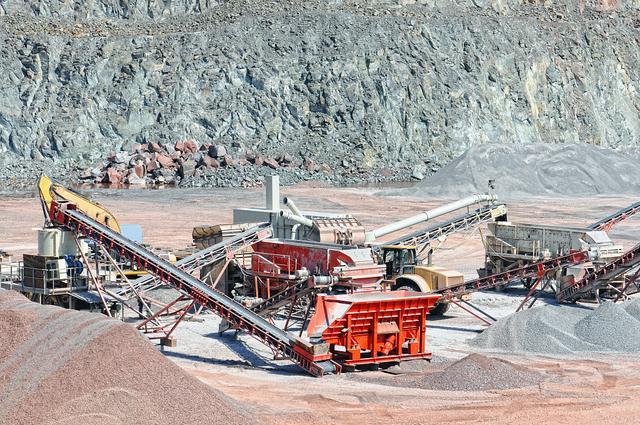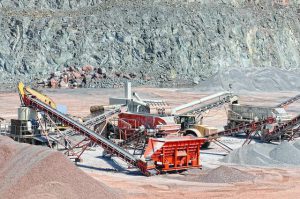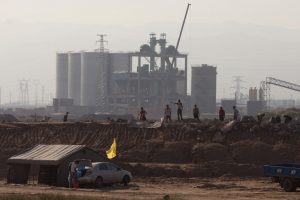(ATF) As the Sino-US trade war continues China is re-appraising its pricing mechanisms for rare earths, of which it is the world’s top supplier. New measures in corporate governance are being considered, as well as the creation of various indexes and an exchange to stabilise prices and sales.
China controls a large volume of rare earth elements, while teams of experts assess the country’s rare earth deposits. The factors have meant that, whether by coincidence or design, rare earth minerals are not being supplied as before to customers such as the US.
China Economic News has reported that Baotou in Inner Mongolia, which is known as the country’s “rare earth capital”, has amassed numerous rare earth products while intellectual property rights have been sought for using them in aerospace, magnetic refrigeration, permanent magnetic motors, hydrogen storage batteries, energy conservation and environmental protection.
The price fluctuation of raw rare earth materials has been the talk of the industry.
Jin Shusen, chairman of Baotou Jinshan Magnetic Materials Co Ltd, said that to solve the problem of price fluctuations, a method of ‘dredging and blocking’ could be adopted. On the one hand, the total amount of rare earth mines should be boosted appropriately, and the capacity for smelting and separation be further improved.
Liu Haifeng, director of North Rare Earth Marketing Department, said: “Fluctuations are much less than previous years due to national level policies such as total volume control and environmental protection measures, which have been introduced to make the rare earth front-end industry more standardised and also to promote the stable development of downstream industries.”
‘Electronic trading platforms would help’
Liu Haifeng believed that using electronic trading platforms recognised by all parties would help improve price mechanisms. However, the current system design of corporate governance, and transaction models, still needed to be continuously improved. In addition, due to the small scale of the rare earth market, they needed to avoid malicious speculation and to stabilise market expectations as the development of the rare earth market had also become a focus of attention.
Yang Zhanfeng, vice chairman of the China Rare Earth Society, said: “Around the Bayan Obo iron mine, we have conducted in-depth and detailed research on the deposit, the occurrence and conditions of rare earths, and the distribution of ore bodies in cooperation with the Institute of Geology and Geophysics from the Chinese Academy of Sciences, and the Chinese Academy of Geological Sciences. The knowledge of mineral resources will lay the foundation for an extension of the industrial chain and efficient use of rare earth resources.”
In addition, a China Rare Earth Industry Development Index was officially released in Baotou earlier this year.
This index, together with the previously released China Rare Earth Price Index and China’s Rare Earth Industry Prosperity Index, constitutes the China Rare Earth Series Index, which provides big data solutions for the industry from micro to macro levels, and builds a “barometer” for the development of China’s rare earth industry.
Li Zhenhong, chairman of Baotou Rare Earth Products Exchange, told the paper that the country has attached great importance to the development of the rare earth industry for many years and has issued a number of management measures and supporting policies. However, in the rare earth market, the price formation mechanism still lacks innovation. To change the status quo, from the experience of the formation of global commodity pricing power, the use of exchanges is one of the effective channels to improve the price formation mechanism.
Yang Wenhao, secretary-general of the China Rare Earth Industry Association, said that due to information asymmetry and the different demands of stakeholders, the sustainable and healthy development of the rare earth industry had been affected to a certain extent. At present, all parties are actively exploring effective cracking methods.
“In the future, China’s rare earth series index will be further optimized and perfected in indicator construction, calculation and analysis, and other issues, to achieve far-reaching stability,” Yang Wenhao said.
US moves in Mongolia, Russia
As reported earlier, the US has been making moves to cultivate rare earth resources in Mongolia and Russia. Though there has been no official comment, anonymous editorial writers on state-sanctioned Baidu.com have indicated that China is not happy with the behaviour of its neighbours.
Rare earths are a vital ingredient in new technologies and China has said it wants to dominate the rare earth market globally. The authoritarian state has been the world’s main supplier of rare earth elements for decades.
But as China’s reserves have depleted, attention is now turning to other potential lodestones.
The next rare earth bonanza will likely happen in Mongolia. As of 2012, more than 80 kinds of mineral resources had been discovered and identified in Mongolia. Today, more than 800 mining areas and more than 8,000 mining sites have been established.
It is worth noting that among these mineral discoveries, the rare earth resources valued by developed economies exceeds 30 million tonnes, and those reserves are second only to China. But a landlocked country such as Mongolia, the only viable export routes are through Russia or China.























